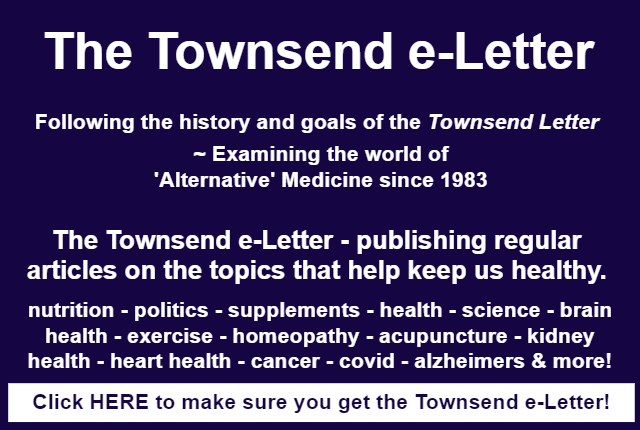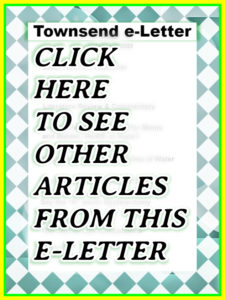Improving Healthcare Worker Wellbeing
Even before the covid pandemic, emotional exhaustion and burnout affected 30-40% of physicians and nurses. Long hours, staff shortages, the push to see patients as quickly as possible, and the challenges of electronic health records are among the factors known to contribute to burnout. As in any job, workers who experience burnout are more likely to commit errors and more likely to quit their jobs, increasing the burden of staff shortages in those who remain.
Researchers at Duke University and Stanford University recently published a study that tested a “bite-sized web-based intervention to improve healthcare worker wellbeing”: Web-based Implementation for the Science of Enhancing Resilience (WISER). WISER is a series of 10 text messages that include an 8-10 minute evidenced-based educational video, leading to simple activities that take two-to-seven minutes.
Each of the ten texts includes the activity “three good things,” during which participants briefly describe three positive experiences that occurred that day. Other texts encourage participants to either reflect on a personal experience that incited awe (“cultivate awe”), recall unsolicited acts of kindness that they witnessed or experienced (“random acts of kindness”), reflect on recent positive interactions and experiences (“relationship resilience”), or “express gratitude towards others through a guided letter-writing exercise.”
From April 1-July 9, 2018, the researchers randomized 546 inpatient and outpatient healthcare workers into two groups. Group 1 received WISER texts for 10 days, beginning July 9, 2018. The second group first acted as a waitlist control before starting WISER 14 days later. Emotional exhaustion, the primary outcome, was evaluated one week after baseline measurement. Depressive symptoms, work-life integration, happiness, emotional thriving, and emotional recovery were secondary outcomes. All outcomes were assessed with validated, wellbeing instruments at baseline, one-week after starting WISER, and then, at one-month, six-month, and 12-month follow-ups.
At the one-week follow-up, all of the outcomes except the primary outcome (emotional exhaustion) showed statistically significant improvement: “On a 100-point scale, compared with cohort 2 (waitlist control), the WISER intervention in cohort 1 reduced depression (-7.5, 95% CI -11.0 – -4.0, p<0.001) and improved work-life integration (6.5, 95% CI 4.1-8.9, p<0.001), happiness (5.7, 95% CI 3.0-8.4, p<0.001), and emotional recovery (5.3, 95% CI 1.7-8.9, p<0.001), but emotional exhaustion did not reach significance (-3.7, 95% CI -8.2- 0.8, p=0.11).”
However, emotional exhaustion was significantly improved at the one-month follow-up—“and that reduction continued at 6 and 12 months.” The authors say, “In retrospect, our efforts to shorten WISER, including the follow-up period of 1-week post-intervention may have been too early to detect a significant change in emotional exhaustion.”
The authors note several study limitations, including the high number of healthcare workers who did not take part after initially showing interest and the high attrition rate in both groups; therefore, selection bias may be a factor in the results. Also, most participants were white females: “It is uncertain whether our findings are generalizable to settings with more diverse workforces….”
Focusing on positive experiences, gratitude, and cultivating awe are known to improve emotional wellbeing; and habitual use of the WISER activities might prevent burnout. I wonder, though, if connecting with one’s core values and with other people might be another way to mitigate depression and burnout.
In his 2018 book, Lost Connections: Uncovering the Real Causes of Depression—and the Unexpected Solutions (reviewed in Townsend Letter, October 2020), Johann Hari explains how lost connections and disconnections can take many forms—e.g., disconnection from meaningful work, from other people, from meaningful values, from the natural world, from status and respect, from a hopeful or secure future. Just as disconnection contributes to depression/anxiety, reconnection can ease, even resolve it.
Dr. Sam Evenington told Hari that he “learned…to shift from asking ‘What’s the matter with you?’ to ‘What matters to you?’ If you want to find a solution, you need to listen to what’s missing in the depressed or anxious person’s life—and help them to find a way toward that.’”
Klotter J. The Cost of Lost Connections. Townsend Letter. October 2020.
Sexton JB, Adair KC, Cui X, Tawfik DS, Profit J. Effectiveness of a bite-sized web-based intervention to improve healthcare worker wellbeing: A randomized clinical trial of WISER. Frontiers in Public Health. December 8, 2022.
Critique of 2020 US Dietary Guidelines
Every five years, according to a congressional statute passed in 1990, the US Departments of Agriculture and Health and Human Services are to publish a report entitled “Dietary Guidelines for Americans.” These reports, which are supposed to be based on the best available, current scientific research, are the “gold standard” for all federal nutrition programs, such as school lunches and healthcare programs.
A 2022 analysis of the most recent (2020) US dietary guidelines process, written by Cheryl Achterberg and colleagues, found the scientific basis for the main dietary advice only relied on studies published before 2013, and the USDA used no consistent, recognized methodology to evaluate study quality. Moreover, the 2020 report omitted scientific literature on weight loss, low-carbohydrate diets, and vegetarian diets—all of which support diet as a way to manage and prevent obesity, type 2 diabetes, and heart disease.
Despite years of research that has provided little evidence that dietary cholesterol affects blood cholesterol levels, the 2020 Dietary Guidelines Advisory Committee (DGAC) reported “strong” evidence that low-cholesterol diets have health benefits. The 2015 DGAC report, however, “explained that dietary advice should not emphasize reducing total fat because low fat ‘diets are generally associated with dyslipidemia (hypertriglyceridemia and low HDL-C concentrations), which are indicators of increased risk for heart disease.” The 2020 DGAC did not explain why they backtracked from the 2015 conclusion.
The guidelines are supposed to address the nutrition needs of the ‘general public.’ Achterberg and colleagues write: “In 1980, when the DGA [Dietary Guidelines for Americans] was first launched, adult obesity rates were under 15%, and the population was mostly healthy….Today, the situation is quite different, with some 60% of American adults diagnosed with one or more diet-related disease, reflecting a general public in which the majority of individuals is no longer healthy.”
Conflict-of-interest among DGAC members predominates. “A recent paper found that 95% of the 2020 to 2025 DGAC members had at least one relationship with industry and that a majority had 20 connections or more with industry,” say Achterberg et al.
In recent years, however, this committee of outside experts has been “marginalized,” according to Nina Teicholz, one of the co-authors. Originally, the DGAC was charged with reviewing the science and producing a report that USDA and HHS officials would then use to create policy and a dietary guidelines document for healthcare professionals and the public. Recent evidence indicates that the DGAC is not independent.
In her substack article, Teicholz writes: “The scientific reviews, long overseen by outside experts on the DGAC, has been almost entirely usurped by the government agency overseeing these reviews, i.e., the US Department of Agriculture (USDA). USDA staff don’t just conduct the reviews, they actually draft the conclusions.” USDA, like other federal agencies, is sympathetic to corporate interests.
“The process for the next update to Dietary Guidelines, which will be the rule of the land until 2030, has just begun,” says Teicholz. “At this juncture, the National Academies has now published four documents—its own three reports and our paper—critiques that dovetail and make clear that significant reform is needed. The problems are so grave that until reforms are completed, our guidelines will be untrustworthy. And until reforms are completed, it will be donuts for breakfast and Doritos for lunch.”
Achterberg C, et al. An analysis of the recent US dietary guidelines process in light of its federal mandate and a National Academies report. PNAS Nexus. 2022; 1:1-12.
Teicholz N. Our Outdated, Unscientific Dietary Guidelines. August 18, 2022.
A Win for Doctors and Patients
On January 25, 2023, Judge William B. Shubb, US District Court for the Eastern District of California, granted the plaintiffs in two separate cases (Hoeg v Lawson and Hoang v. Bonta) a preliminary injunction that halts the enforcement of California Assembly Bill 2098, which prohibits the communication of “covid misinformation” by doctors to patients, until a final judgment is made.
The controversial medical censorship law, which went into effect on January 1, 2023, allows the state medical and osteopathic boards to investigate and discipline physicians (MDs and DOs) whose advice concerning covid prevention and treatment falls outside “contemporary scientific consensus.”
The California law was instigated by a July 2021 press release from the Federation of State Medical Board (FSMB) that stated: “’Physicians who generate and spread COVID-19 vaccine misinformation or disinformation are risking disciplinary action by state medical boards, including the suspension or revocation of their medical license.’” FSMB is a national, non-profit organization that advocates for state boards and provides supportive education, assessment, and research. Although the organization has no legal ties to state boards, it does have a great deal of influence.
Preliminary injunctions are granted only in cases in which the plaintiffs are likely to succeed in a trial; it maintains the status quo until a final decision is made.
Judge Shugg recognized the chilling effect that this type of censorship (violating the First Amendment) has on doctors, who fear disciplinary actions, and on the patients, who depend on their doctors for advice. He also agreed with the five MDs (plaintiffs in Høeg v. Lawson) and the DO, Physicians for Informed Consent, and Children’s Health Defense-California chapter (plaintiffs in Hoang v. Bonta) that AB 2098 is unconstitutionally vague, a violation of the Fourteenth Amendment.
His decision focused on the Fourteenth Amendment concerns. In his court order, Judge Shugg referred to an expert declaration from Sanjay Verma, MD, provided by the Hoang plaintiffs, that showed the contradictory advice provided by public health agencies over the past few years: “Because plaintiffs have established a likelihood of success on the grounds of their Fourteenth Amendment vagueness challenges, the court need not address the merits of their First Amendment arguments.”
Rick Jaffe, Esq., one of the lawyers for Hoang v. Bonta, expects the case to proceed and expects the California Attorney General’s office to appeal. But for now, AB 2098 is not enforceable against the defendants in these cases, which includes members of Physicians for Informed Consent and Children’s Health Defense.
About the Author
Jule Klotter joined Townsend Letter’s staff in 1990. Over the years, she has written abstract articles for “Shorts” and many book reviews that provide information for busy practitioners. She became Townsend Letter’s editor near the end of 2016.


